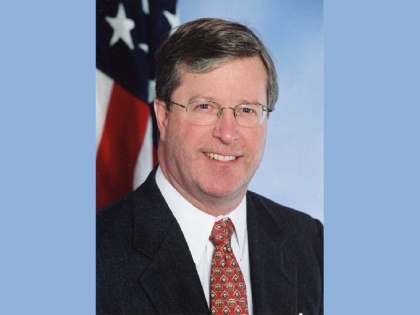
"Stay On Guard Against Meth"

It’s always important in government to stop from time to time and take a look back. Is this program still serving its original purpose? Does this service still reflect present-day challenges? Are we reaching a goal that we set several years ago and if not, why not?
As much as we need to keep looking forward in New York government, to anticipate and respond to future challenges, it’s equally important to reflect on past actions to ensure that they’re still the right actions.
I began serving in the New York State Senate in 2005. One of the hot-button concerns we faced was a startling rise in the manufacture and use of the illegal drug methamphetamine, more commonly known as meth, in New York State. The New York State Commission of Investigation (SIC) had just issued a new report warning that meth would quickly become a dire public health and safety threat unless New York adopted tougher state laws to combat the drug's proliferation. The SIC's January 2005 report flatly stated that New York "could become a haven for methamphetamine users and manufacturers" without new laws. Our own Southern Tier was highlighted as a hotbed of criminal meth activity. In fact it was noted that some of the first clandestine meth labs found in New York were discovered in Chemung and Tioga counties.
At the same time the SIC report was being touted as the harbinger of dark days to come, the fatal shootings of two sheriff's deputies in Bradford County, Pennsylvania in March 2004, in a meth-related confrontation, remained clear in the minds of many Southern Tier residents. So we knew full well what we were facing. Meth-related public awareness was at a fevered pitch here at home.
All of this public furor helped spur the enactment of a comprehensive anti-meth law in 2005. I was grateful for the opportunity to help develop this new strategy and sponsor it in the Senate. The new law made it easier to prosecute meth manufacturers and implemented strong criminal penalties outlawing the operation of clandestine labs. It promoted community awareness and education. It focused on child protection initiatives, and the environmental dangers associated with meth labs. Many longtime observers of state government still consider our 2005 anti-meth initiative an unexpected demonstration of bipartisan concern and cooperation.
Since 2005 we've admittedly seen minimal meth activity regionally and, not surprisingly, attention on the issue has ebbed. But meth is still considered the fastest-growing illicit drug in the nation. An epidemic of meth, thankfully, has not taken hold in the Southern Tier as it was feared a few short years ago, but I promise you that local law enforcement officers and community leaders have not turned their backs on it. That would be a mistake. Earlier this year the Bath Landlords’ Association held a workshop to raise awareness and encourage village landlords to help identify clandestine labs. In May, the Chemung County Sheriff’s Office and the New York State Police capped an eight-month investigation with the arrest of two men accused of operating a meth lab in a mobile home park in Erin. The investigation was part of a state-funded, multi-agency program to combat meth production and distribution called "Operation RAM -- Rid Area of Meth."
The New York State Office of Alcohol and Substance Abuse Services (OASAS) was charged with developing a statewide meth information program. The office's online "Methamphetamine Electronic Clearinghouse"provides law enforcement agencies, health care professionals, emergency services personnel, parents, teens and other concerned citizens a one-stop catalogue of methamphetamine-related information. It includes links to local organizations like the Southern Tier of New York Methamphetamine Prevention Program, as well as to a new site launched late last year by the federal Drug Enforcement Agency (DEA) -- the nation’s first-ever Meth Site Registry posting locations in each state where known meth labs or dumpsites have been found.
So as we look back we can see the importance of a cornerstone of our 2005 anti-meth strategy: ongoing public awareness and education. We still can’t stress enough the importance of a regional army of law officers, district attorneys, legislators, news reporters, educators and, maybe most of all, concerned citizens to help defend our communities. The 2005 law cleared the way for more aggressive and potent law enforcement to shut down meth manufacturers. It encouraged vigilance through community awareness.
Public information, in fact, remains our most powerful weapon as we work to stay on guard against the spread of meth.



